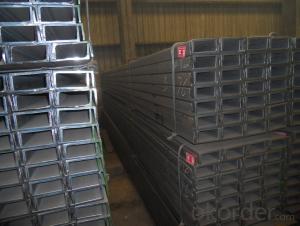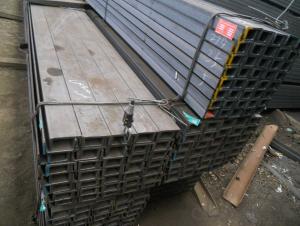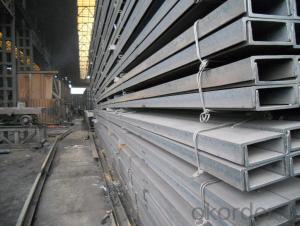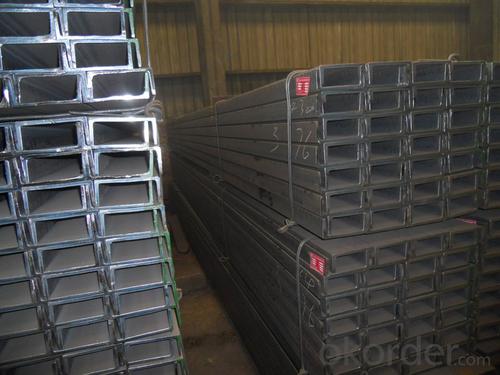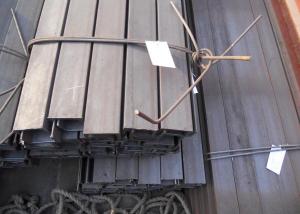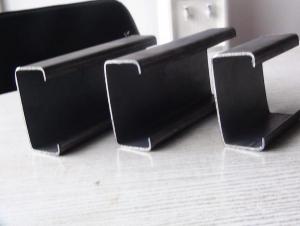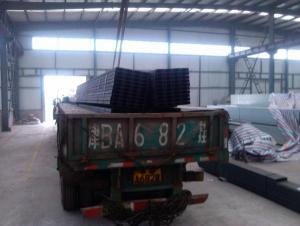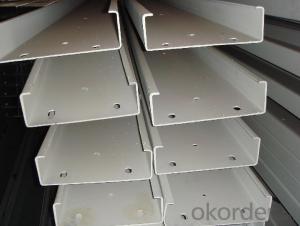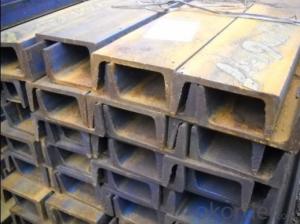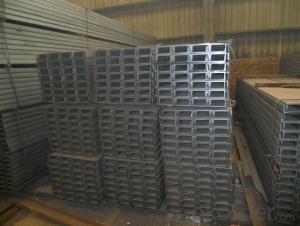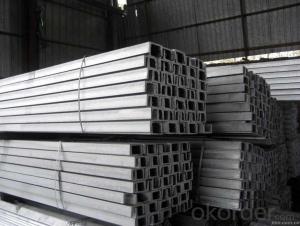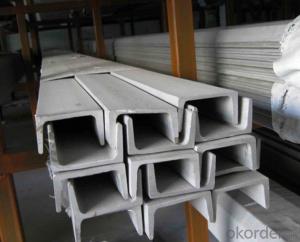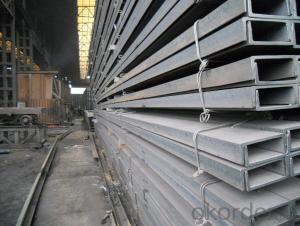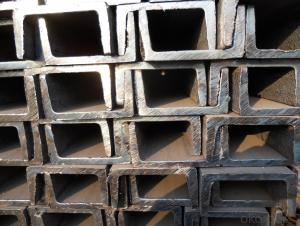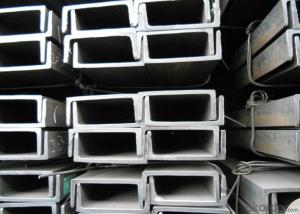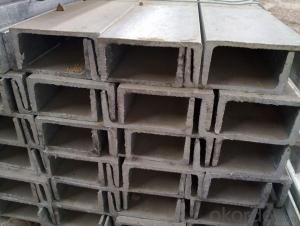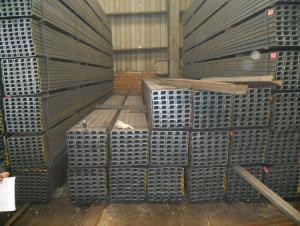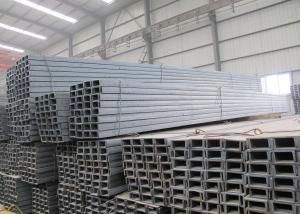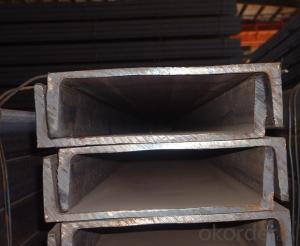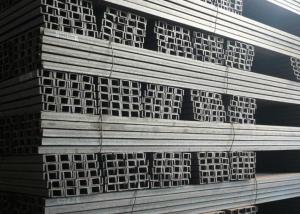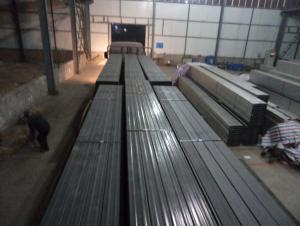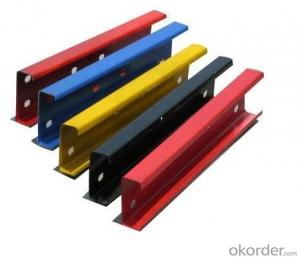Hot Rolled Steel U Channel UPN EN Standard
- Loading Port:
- China main port
- Payment Terms:
- TT OR LC
- Min Order Qty:
- 100 m.t.
- Supply Capability:
- 10000 m.t./month
OKorder Service Pledge
OKorder Financial Service
You Might Also Like
Product Description:
OKorder is offering Hot Rolled Steel U Channel UPN EN Standard at great prices with worldwide shipping. Our supplier is a world-class manufacturer of steel, with our products utilized the world over. OKorder annually supplies products to African, South American and Asian markets. We provide quotations within 24 hours of receiving an inquiry and guarantee competitive prices.
Product Applications:
Hot Rolled Steel U Channel UPN EN Standard are ideal for structural applications and are widely used in the construction of buildings and bridges, and the manufacturing, petrochemical, and transportation industries.
Product Advantages:
OKorder's Hot Rolled Steel U Channel UPN EN Standard are durable, strong, and wide variety of sizes.
Main Product Features:
· Premium quality
· Prompt delivery & seaworthy packing (30 days after receiving deposit)
· Can be recycled and reused
· Mill test certification
· Professional Service
· Competitive pricing
Product Specifications:
Manufacture: Hot rolled
Grade: Q195 – 235
Certificates: ISO, SGS, BV, CIQ
Length: 6m – 12m, as per customer request
Packaging: Export packing, nude packing, bundled
| EN STANDARD CHANNEL (UPN) | ||||||
| SIZE(MM) | h(mm) | b(mm) | s(mm) | t(mm) | kg/m | length |
| 80x45x6x8 | 80 | 45 | 6 | 8 | 8.64 | 6m,12m |
| 100X50x6x8.5 | 100 | 50 | 6 | 8.5 | 10.6 | 6m,12m |
| 120x55x7x9 | 120 | 55 | 7 | 9 | 13.4 | 6m,12m |
| 140x60x7x10 | 140 | 50 | 7 | 10 | 16 | 6m,12m |
| 160x65x7.5x10.5 | 160 | 65 | 7.5 | 10.5 | 18.8 | 6m,12m |
| 180x70x8x11 | 180 | 70 | 8 | 11 | 22 | 6m,12m |
FAQ:
Q1: How do we guarantee the quality of our products?
A1: We have established an advanced quality management system which conducts strict quality tests at every step, from raw materials to the final product. At the same time, we provide extensive follow-up service assurances as required.
Q2: what is the difference between actual weight and theoretical weight?
A2: All the section steel has two weights: actual weight and theoretical weight. Actual weight is the weighing out when the product delivered from the mill. Theoretical weight is calculated by pieces. The invoice can be based on each of them as your request.
Q3: How many tons of steel products could be loaded in containers?
A3: Usually the steel products are delivered by bulk vessel because of the large quantity and the freight. However, there are no bulk vessel enter some seaports so that we have to deliver the cargo by containers. The 6m steel product can be loaded in 20FT container, but the quantity is changed according to the size, usually from 18tons to 25tons.
Images:
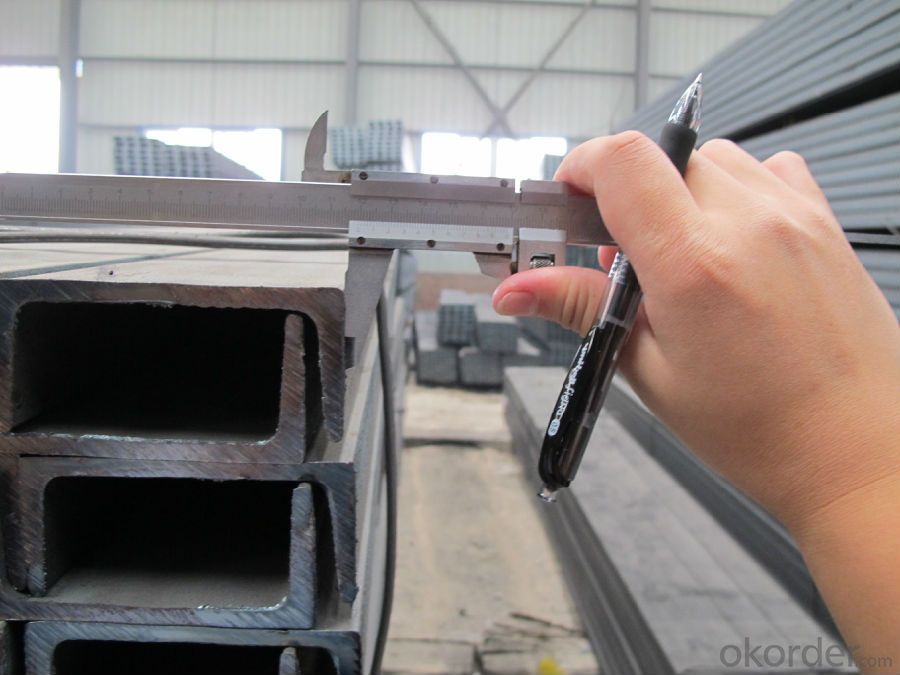
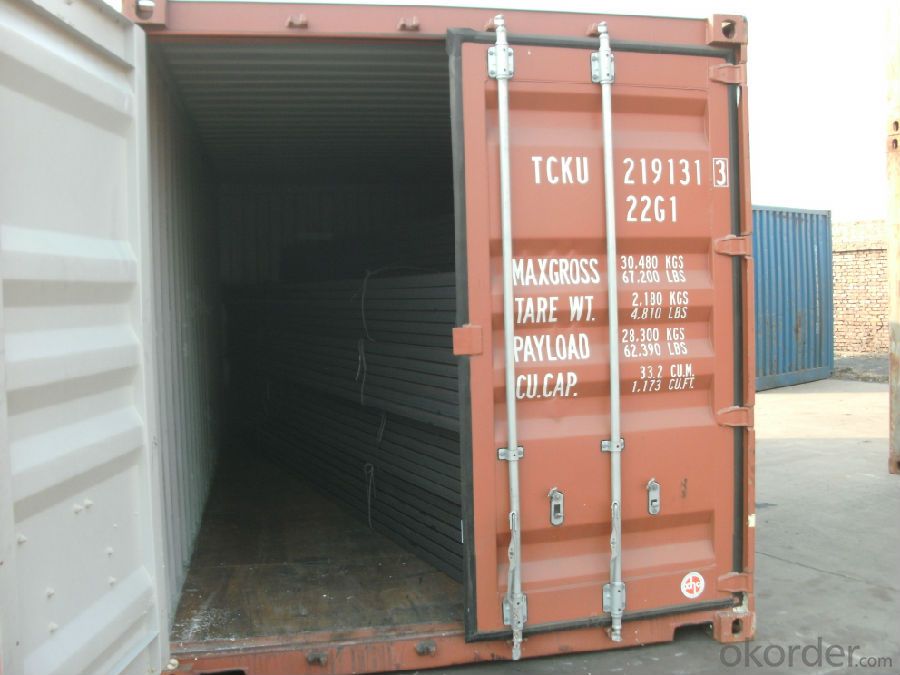
- Q: Can steel channels be used for supporting prefabricated wall panels?
- Supporting prefabricated wall panels is possible with steel channels. Steel channels have a robust and inflexible support structure that can withstand the weight and load of the wall panels. In construction projects, they are frequently employed to provide stability and structural integrity to various building components, notably walls. Steel channels offer numerous benefits, including a high strength-to-weight ratio, durability, and versatility. They can be easily customized and fabricated to meet the precise requirements of the project. Moreover, steel channels are fire, pest, and moisture resistant, making them suitable for supporting prefabricated wall panels in a variety of buildings, such as residential, commercial, and industrial structures.
- Q: After the type of channel is not marked A or B, which shall be calculated?
- Channel steel is a kind of carbon structural steel used for construction and machinery. It is a complex section steel. Its cross section has a groove shape. Channel steel is mainly used in building structure, curtain wall engineering, mechanical equipment and vehicle manufacturing, etc.. In use, it requires better welding, riveting performance and comprehensive mechanical properties. The raw material steel billet for channel steel is carbon or low alloy steel billets with a carbon content of not more than 0.25%. The specification of channel steel is expressed by the height of the waist (H) * leg width (b) * waist thickness (d), such as 100*48*5.3, which means that the waist height is 100 mm, the width of the leg is 48 mm, and the thickness of the channel is 5.3 mm, or 10# channel. The same height of the channel, if there are several different leg width and waist thickness, also need to add a, B, C on the right side of the model to distinguish, such as 25#a, 25#b, 25#c and so on. In general, according to the model a, B, C order, its thickness (or intensity) increased in turn
- Q: Can steel channels be galvanized or coated?
- Yes, steel channels can be galvanized or coated. Galvanizing involves applying a protective zinc coating to the surface of the steel channel, while coating can refer to various other types of protective coatings such as paint or powder coating. Both galvanizing and coating help to prevent corrosion and extend the lifespan of the steel channel.
- Q: Six meters long, standard 10 channel steel, theoretical weight
- Channel steel is a kind of carbon structural steel used for construction and machinery. It is a complex section steel. Its cross section has a groove shape. Channel steel is mainly used in building structure, curtain wall engineering, mechanical equipment and vehicle manufacturing, etc.. In use, it requires better welding, riveting performance and comprehensive mechanical properties. The raw material steel billet for channel steel is carbon or low alloy steel billets with a carbon content of not more than 0.25%.
- Q: Can steel channels be used for automotive applications?
- Indeed, automotive applications can make use of steel channels. In a multitude of industries, including automotive manufacturing, steel channels are renowned for their versatility and widespread use. They are frequently employed in the creation of vehicle frames, chassis, and structural components due to their remarkable strength, durability, and capacity to endure substantial loads. By offering exceptional support and stability, steel channels guarantee the structural integrity and safety of automobiles. Furthermore, steel channels can be tailored and manufactured to fulfill the precise needs of automotive applications, thereby establishing themselves as a dependable selection in the automotive sector.
- Q: Can steel channels be used in high-temperature applications?
- Yes, steel channels can be used in high-temperature applications. Steel has excellent heat resistance and can withstand high temperatures without losing its strength or structural integrity. However, it is important to select the appropriate type of steel channel that is specifically designed for high-temperature environments. High-temperature alloys such as stainless steel or heat-resistant steel are commonly used in applications where the temperature exceeds the capabilities of standard carbon steel. These alloys have higher levels of chromium, nickel, and other elements that provide enhanced resistance to oxidation, corrosion, and thermal stress. Therefore, steel channels made from these alloys are suitable for use in high-temperature applications such as furnaces, boilers, exhaust systems, and industrial ovens.
- Q: What are the different types of steel channel profiles?
- There are several different types of steel channel profiles, each designed for specific applications and structural needs. Some of the commonly used types include: 1. C Channel: This is a popular type of steel channel profile that has a C-shaped cross-section. It is often used in construction and engineering projects as a structural support or as a frame for various applications. 2. U Channel: Also known as a U-shaped channel, this type has a similar cross-section to the letter "U". It is commonly used in construction, manufacturing, and automotive industries for applications such as framing, bracing, and support. 3. Hat Channel: Hat channels have a distinctive hat-like shape, with a flat bottom and two vertical sides. They are often used in construction for applications such as ceiling and wall framing, as well as in the automotive industry for reinforcing structural components. 4. Box Channel: As the name suggests, box channels have a rectangular or square cross-section. They are frequently used in construction, manufacturing, and engineering projects where strength and rigidity are required. 5. Z Channel: Z channels have a Z-shaped cross-section, with two flanges on opposite sides and a center web connecting them. They are commonly used in construction for applications such as framing, support, and bracing, especially in roofing and cladding systems. 6. Lipped Channel: Lipped channels, also known as lip channels or lip sections, have an additional lip or flange along one side of the channel. This lip provides extra strength and rigidity, making it suitable for applications such as shelving, racking, and structural support. These are just a few examples of the different types of steel channel profiles available. The choice of profile depends on the specific requirements of the project, including load-bearing capacity, structural stability, and overall design considerations.
- Q: Can steel channels be used for roofing applications?
- No, steel channels are not typically used for roofing applications. Steel channels are generally used in structural applications such as supporting beams, columns, and framing in construction projects. For roofing applications, materials such as metal panels, asphalt shingles, clay or concrete tiles, or even thatched roofing are commonly used. These materials are specifically designed and manufactured to provide weatherproofing, insulation, and durability to protect the structure and its occupants from outside elements. While steel channels may have other important uses in construction, they are not suitable for roofing applications as they do not provide the necessary qualities required for an effective and long-lasting roof.
- Q: Can steel channels be used for stair stringers in commercial buildings?
- Stair stringers in commercial buildings can indeed utilize steel channels. The strength and durability of steel channels make them a popular choice in construction. By offering remarkable support and stability to staircases, they prove to be ideal for commercial buildings that anticipate heavy foot traffic. Moreover, steel channels can be tailored to meet specific design needs, granting flexibility in constructing stair stringers.
- Q: Can steel channels be used in outdoor applications?
- Outdoor applications can indeed make use of steel channels. These channels are constructed from robust and enduring steel material, granting them the ability to withstand adverse weather conditions like rainfall, snowfall, and extreme temperatures. Due to their exceptional strength and capacity to bear hefty loads, they are frequently employed in open-air structures such as bridges, highways, and outdoor equipment. Moreover, steel channels can undergo treatment with protective coatings like galvanization or powder coating, thereby bolstering their resistance to corrosion and rust. Consequently, they are perfectly suitable for prolonged outdoor utilization.
Send your message to us
Hot Rolled Steel U Channel UPN EN Standard
- Loading Port:
- China main port
- Payment Terms:
- TT OR LC
- Min Order Qty:
- 100 m.t.
- Supply Capability:
- 10000 m.t./month
OKorder Service Pledge
OKorder Financial Service
Similar products
Hot products
Hot Searches
Related keywords
